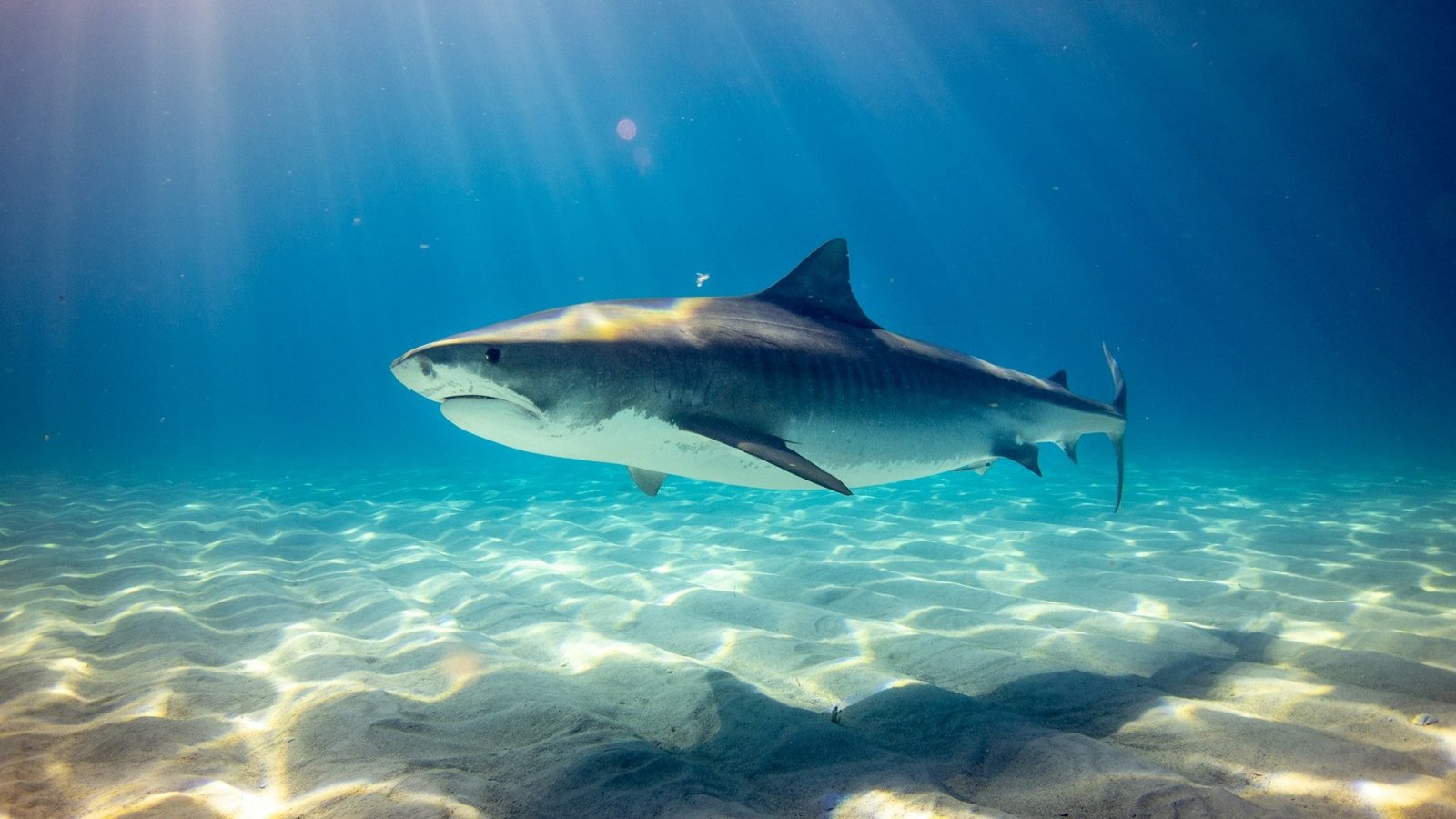Sharks are some of the ocean’s most powerful and efficient predators, with several species built for high-speed pursuits. Known for their sleek bodies, strong tails, and hydrodynamic form, the fastest sharks in the ocean can reach incredible speeds while hunting prey or evading threats. These species rely on speed not only to catch food but also to survive in the competitive marine world. From short bursts to sustained swimming, speed gives these sharks a unique advantage.
In this article, we delve into the top 10 fastest shark species, examining what makes them so swift and how they utilize their speed to dominate the seas.
1. Shortfin Mako Shark: The Speed Champion
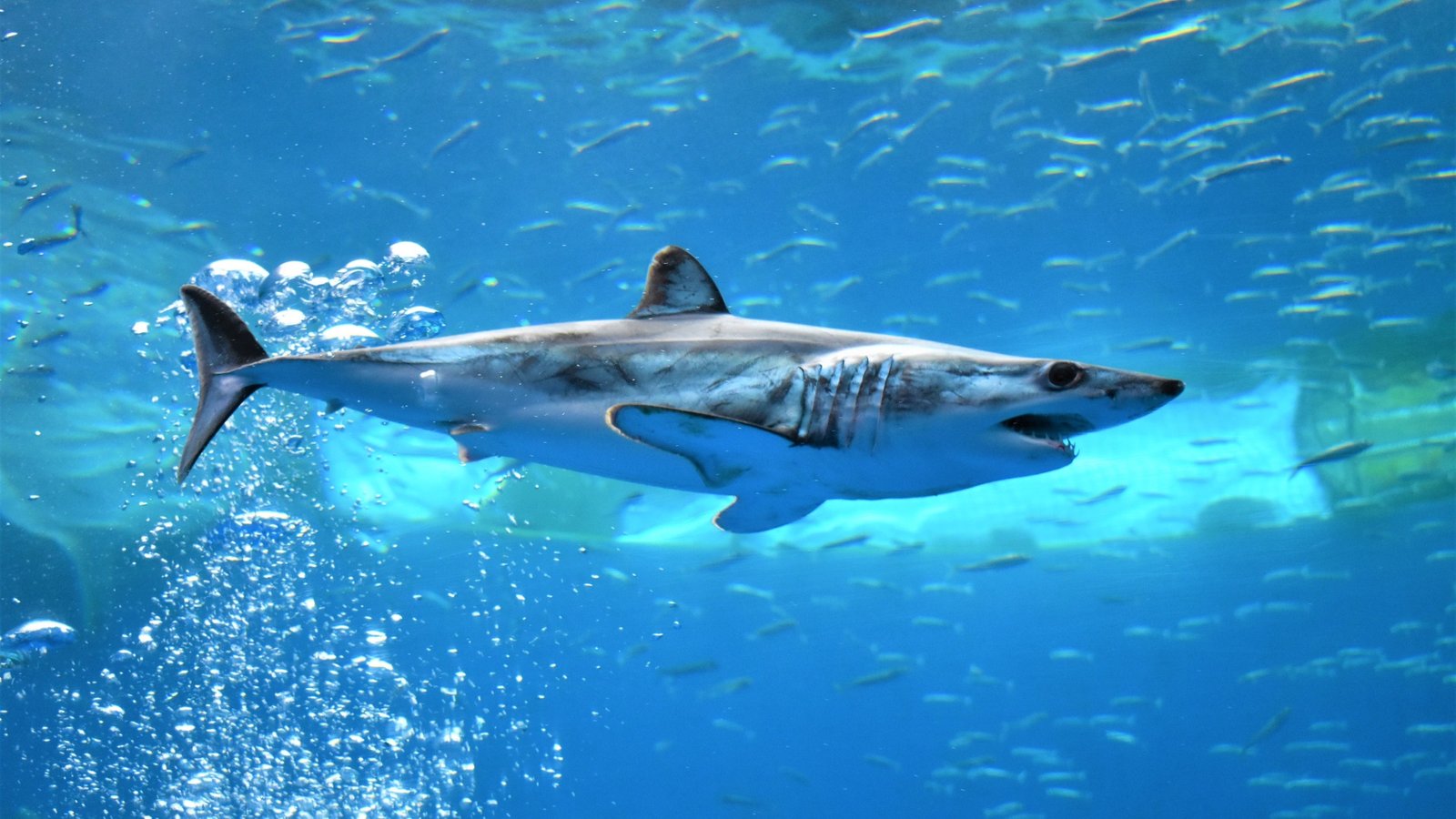
Topping the list of fastest sharks in the ocean is the shortfin mako shark. This species is widely regarded as the fastest shark, capable of reaching speeds up to 45 miles per hour. Its torpedo-shaped body and long, narrow fins allow it to slice through the water with ease.
Shortfin makos are powerful hunters, often preying on fast fish like tuna, mackerel, and swordfish. Their speed also helps them leap high out of the water in dramatic displays. These sharks are known for both their agility and long-distance endurance, making them a favorite among shark enthusiasts.
2. Salmon Shark: Cold-Water Sprinter
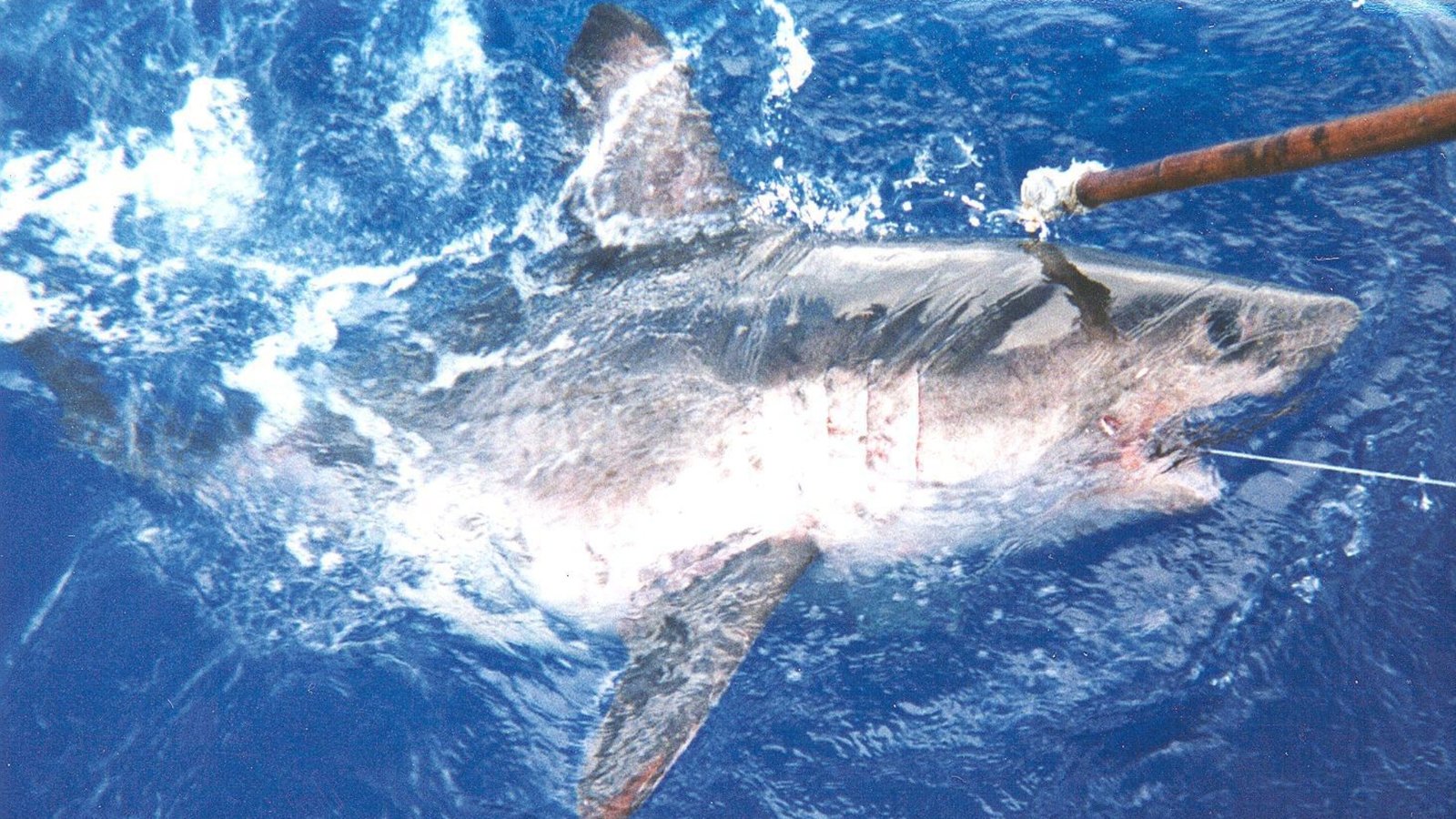
The salmon shark is another incredibly fast species, reaching speeds of around 40 miles per hour. Found in the North Pacific, this shark is often compared to the mako due to its body shape and strength. What sets the salmon shark apart is its ability to regulate body temperature, allowing it to remain active in colder waters.
This adaptation supports fast bursts of speed during hunts. As its name suggests, the salmon shark often targets salmon, but it also eats squid and herring. Its speed and cold tolerance make it a top predator in its environment.
3. Blue Shark: Streamlined for Speed
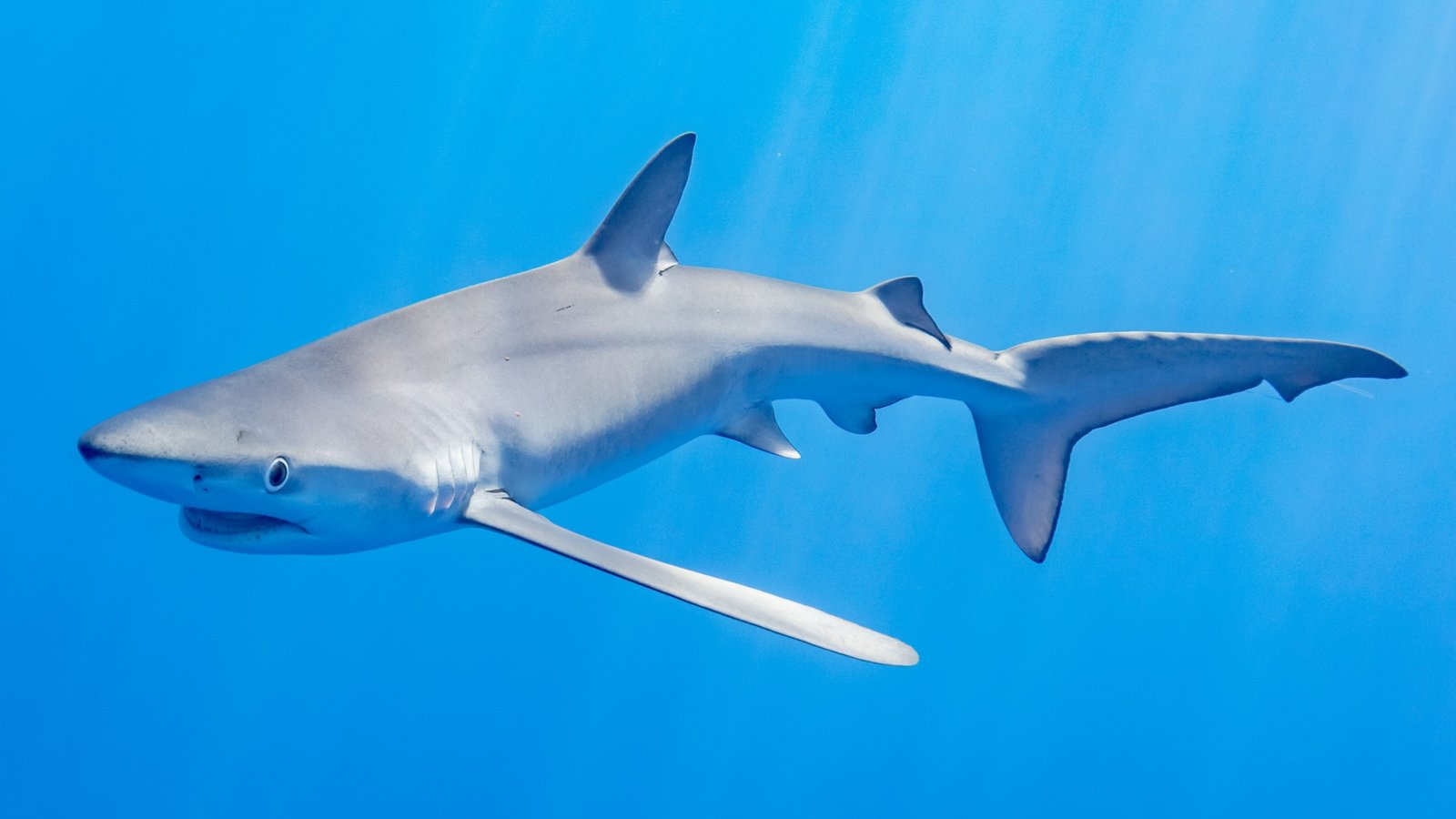
Blue sharks are built for long-distance travel and swift movement. With a speed of about 24 miles per hour, they are not the fastest in short bursts but excel in sustained swimming. Their long, slender bodies reduce drag, allowing them to cruise the open ocean with minimal effort.
These sharks often migrate over great distances, sometimes across entire oceans. Their speed and stamina enable them to stay with schools of fish, such as anchovies and sardines, which comprise the bulk of their diet. They are an excellent example of endurance and adaptability in pelagic waters.
4. Great White Shark: Power and Speed Combined
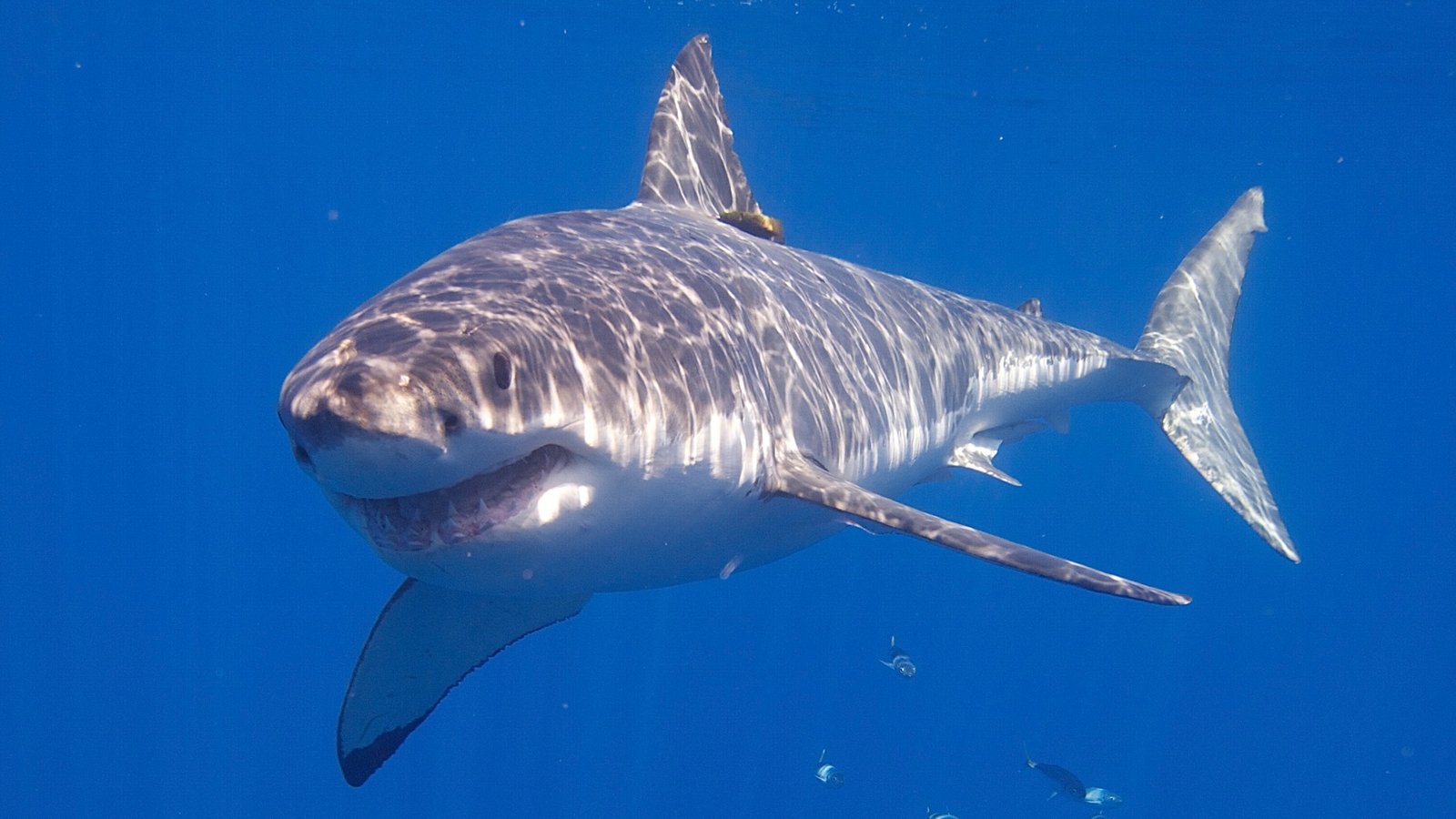
The great white shark may not be the fastest in absolute speed, but it can still reach impressive bursts of up to 25 miles per hour. This speed, combined with its immense power and size, makes it one of the most formidable predators in the ocean.
Great whites use their speed in short, explosive attacks, often breaching the surface when hunting seals. Their muscular bodies and strong tails deliver powerful thrusts, allowing them to ambush prey with precision. Their speed, combined with stealth and intelligence, solidifies their place among the fastest sharks.
5. Thresher Shark: Speed and Weaponry
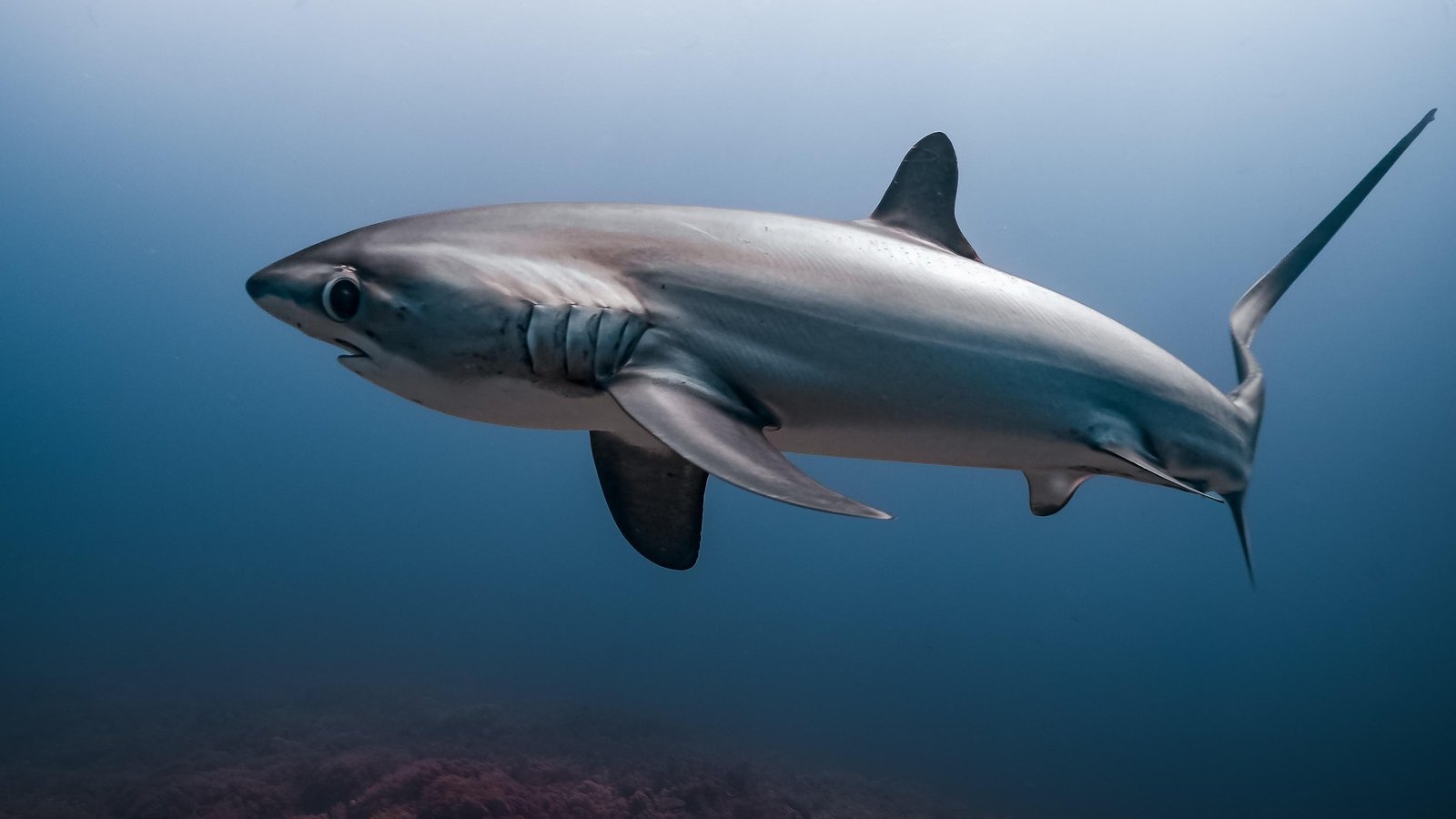
Thresher sharks are known for their distinctive, whip-like tails that can be as long as their bodies. These tails are not just for show. They use them to stun prey before feeding. Threshers can swim at speeds close to 22 miles per hour, especially when lunging at schools of fish.
Their slender build and large pectoral fins contribute to their agility. Thresher sharks are typically solitary and rely on speed and timing rather than brute force to secure their meals. Their unique hunting style makes them one of the most fascinating fast sharks in the ocean.
6. Blacktip Shark: Speedy in Shallow Waters
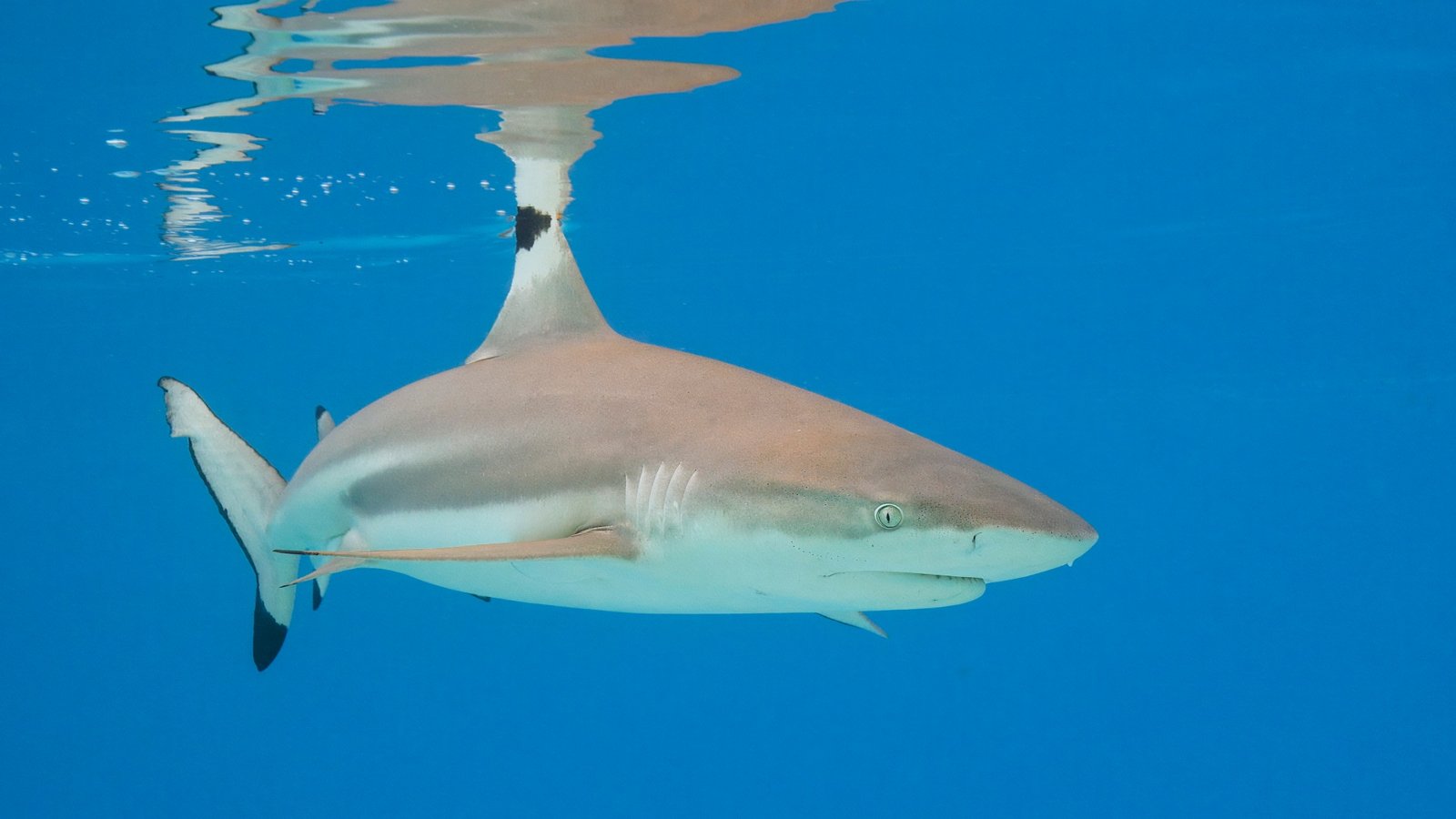
Blacktip sharks are often seen leaping from the water, especially when chasing baitfish in shallow coastal waters. These sharks can swim at speeds of around 20 miles per hour. Their compact, streamlined bodies help them change direction quickly during hunts.
They feed on small fish, rays, and crustaceans and are known for their energetic behavior. Blacktip sharks are commonly found in tropical and subtropical waters and are frequently encountered by divers. Their bursts of speed make them efficient and agile hunters in reef and nearshore ecosystems.
7. Oceanic Whitetip Shark: Slow and Strategic but Capable
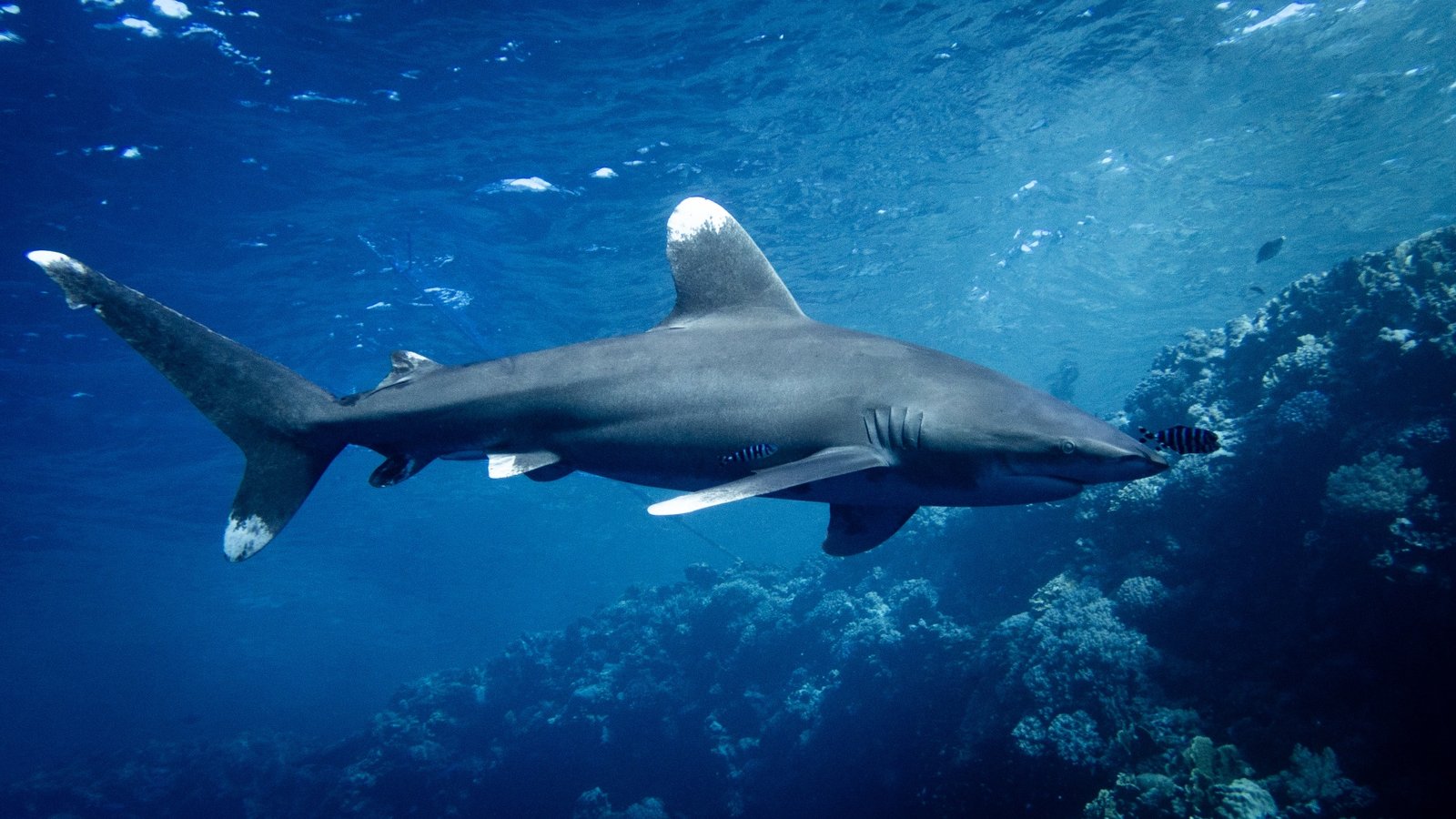
Though not the fastest shark on this list, the oceanic whitetip shark deserves mention for its ability to sustain long periods of movement across vast distances. Typically cruising at moderate speeds, this shark can accelerate when needed to pursue weakened or disoriented prey.
Found in the open ocean, whitetips are scavengers and opportunistic feeders. Their broad, rounded fins give them stability and control while maneuvering. While not built for bursts, they demonstrate that speed is not always about sprinting. Rather, it can also be about endurance and precise timing.
8. Bull Shark: Strength Over Speed

Bull sharks are not the fastest sharks in the ocean, but they can swim up to 11 miles per hour and rely heavily on ambush tactics. Known for their aggressive nature and ability to live in both salt and freshwater, bull sharks are among the most dangerous species to humans.
Their speed helps them surprise prey in murky environments, such as estuaries and rivers. Instead of outrunning their targets, bull sharks use their stocky build and quick acceleration to overwhelm them. Their combination of speed, strength, and adaptability makes them formidable predators.
9. Spinner Shark: Acrobatics in Action
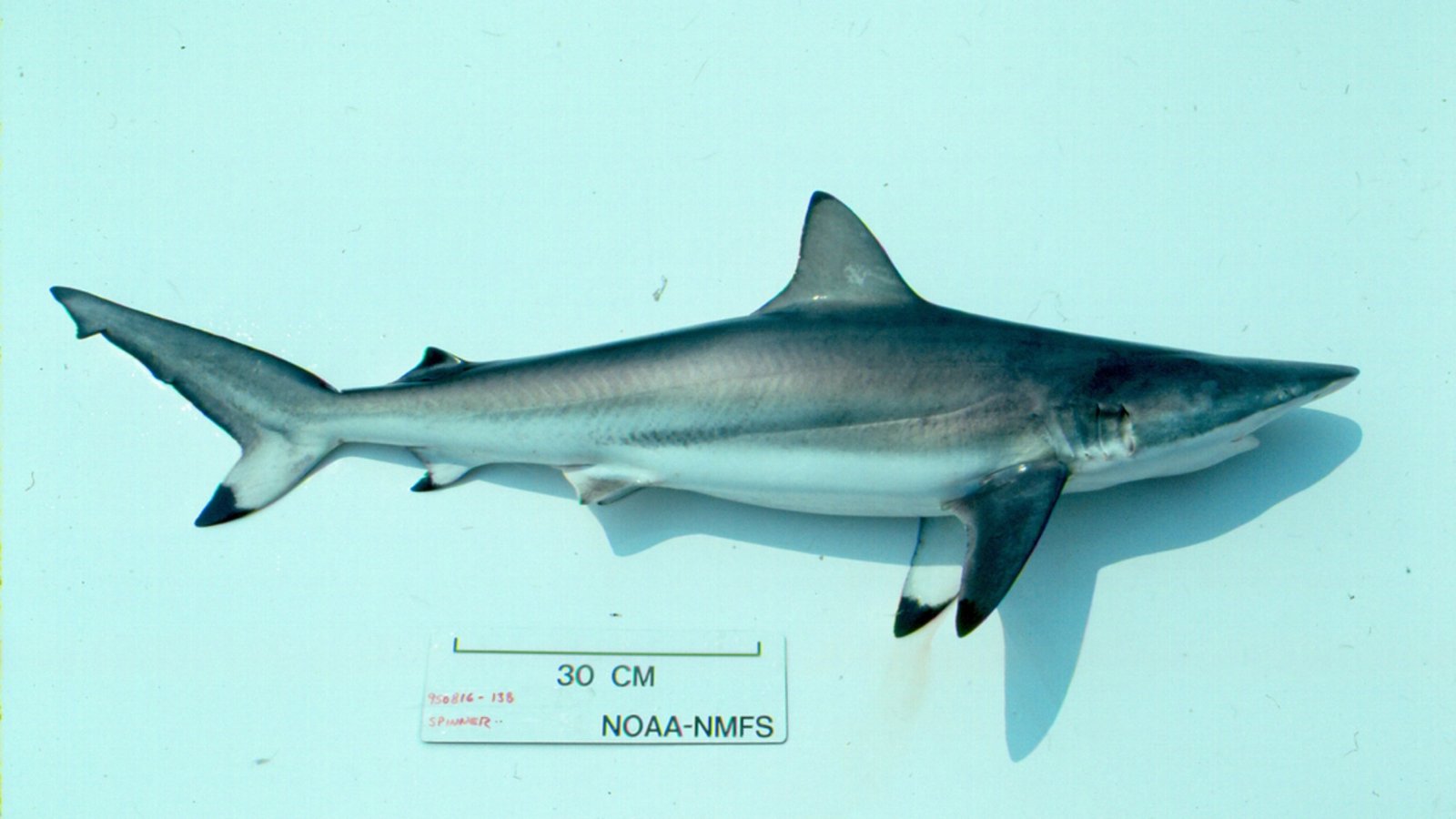
Spinner sharks are known for their high-energy hunting tactics. These sharks can swim at speeds of nearly 20 miles per hour and are often seen spinning out of the water while chasing schools of fish. This spinning motion is not just acrobatic. It also helps them catch multiple fish in a single pass.
They are slender, fast-moving sharks found in warm coastal waters. Spinner sharks are often confused with blacktip sharks, but are distinct in their behaviors and body proportions. Their speed and agility help them stay competitive in dense feeding frenzies.
10. Dusky Shark: Balanced Speed and Power

The dusky shark rounds out our list with a respectable swimming speed of about 15 miles per hour. These sharks are large and muscular, giving them the strength to deliver powerful bursts when needed. They are found in temperate and tropical waters, feeding on a variety of fish and squid.
Dusky sharks are known for their long migrations and deep dives. While they may not match the mako or salmon shark in raw speed, they maintain a strong balance between stamina, power, and agility. This enables them to succeed in a wide range of environments.
What Makes Sharks Fast?
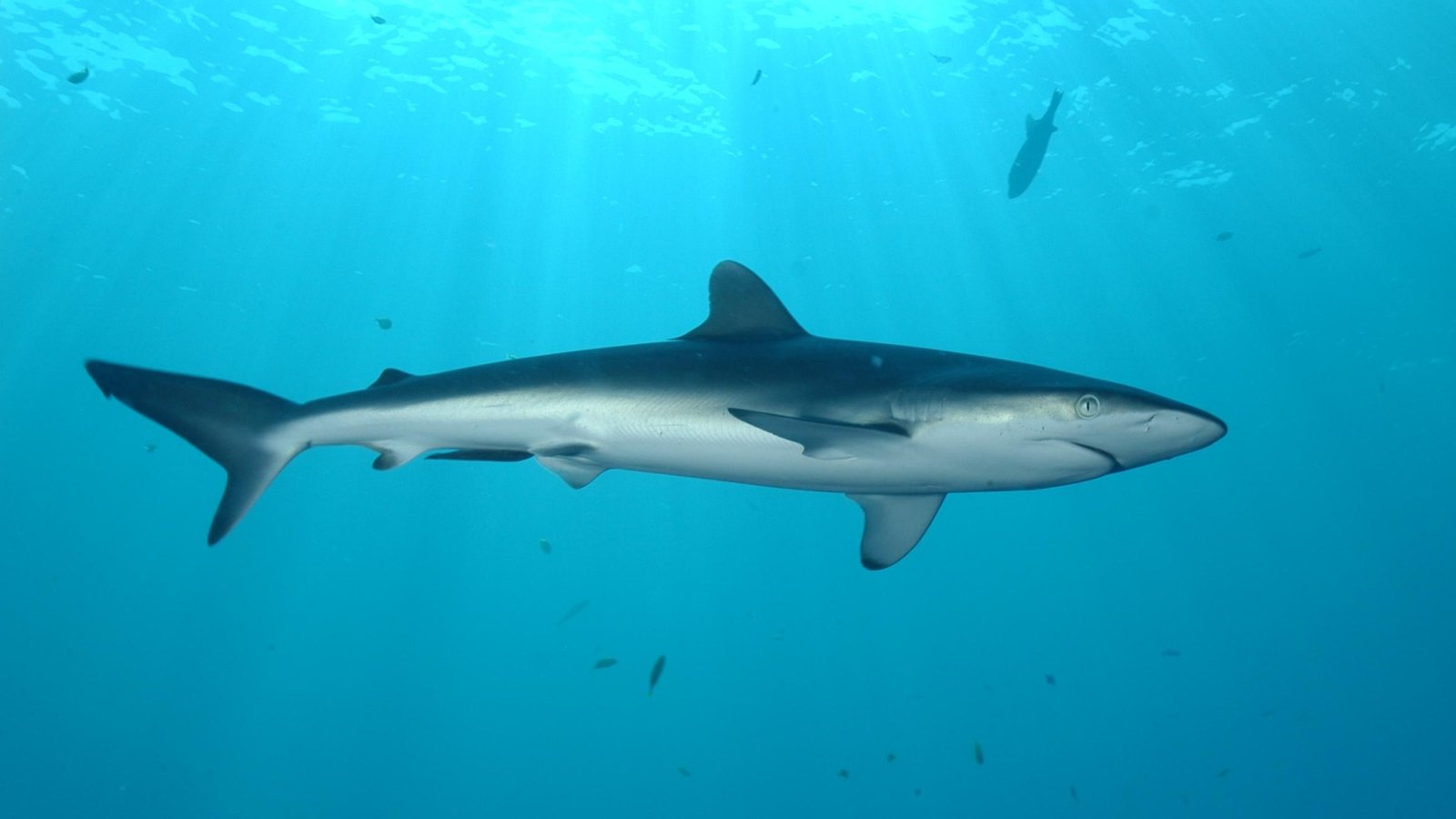
Shark speed depends on several physical traits. A streamlined body, a large caudal (tail) fin, and strong muscles are essential. Some species also possess specialized muscles that help retain heat, enabling more powerful and sustained movements.
Their skin, covered in tiny, tooth-like scales called dermal denticles, reduces drag, allowing them to glide smoothly through water. These adaptations evolved over millions of years, enabling each species to find its niche within the ocean ecosystem.
Why Speed Matters for Sharks

Speed plays a vital role in survival. For many sharks, it means the difference between catching a meal or going hungry. Fast sharks can chase agile prey, escape threats, or migrate across large ocean territories in search of food and mates.
Understanding which sharks are the fastest provides insight into how they live, what they eat, and their role within the broader marine food web. Speed, while not the only advantage, is one of the most impressive tools in a shark’s hunting arsenal.
Final Thoughts

From the lightning-fast mako to the leaping spinner shark, the fastest sharks in the ocean showcase just how diverse and specialized these predators can be. Each species uses speed in its own way, whether for chasing prey, covering long distances, or executing sudden attacks.
By learning about these high-speed hunters, we gain a greater appreciation for shark biology and behavior. The ocean is full of surprises, and speed is just one of many traits that make sharks some of the most remarkable creatures in the sea. Continue exploring shark-related topics to discover more about their remarkable adaptations.

